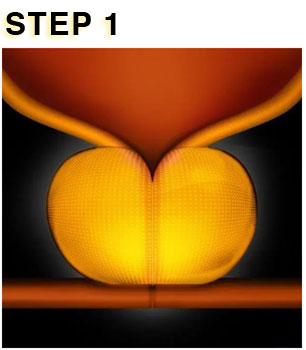What is the UroLift System?
The UroLift® System uses a minimally invasive approach which can provide rapid relief and recovery of BPH symptoms. This option can can get men off of BPH medications and help them to avoid major surgery. The goal of the UroLift System treatment is to relieve BPH symptoms and help men get back to their daily routines as soon as possible.
“The UroLift® System treatment has demonstrated a significant improvement in quality of life for patients compared to medications.2,3 The UroLift® System is the only BPH procedure shown not to cause new and lasting erectile or ejaculatory dysfunction, while being a safe and effective treatment of lower urinary tract symptoms due to BPH.




FREQUENTLY ASKED QUESTIONS ABOUT UROLIFT®
How Does The UroLift System Work?
“The UroLift System consists of a delivery device and tiny permanent implants. FDA cleared in 2013, this unique technology works by directly opening the urethra with tiny implants that hold the enlarged tissue out of the way, like tiebacks on a window curtain. No cutting, heating, or ablating tissue is involved, making the UroLift System the first and only BPH treatment that does not remove prostate tissue and does not negatively impact a man’s sexual function.”
How Do I Know If The UroLift System Is Right For Me?
“The UroLift System is a new treatment option for BPH patients who are looking for an alternative to drugs or major surgery. You may be considering or scheduled for a TURP/Laser treatment, or are unhappy with or have stopped taking medications. The UroLift System is appropriate for patients seeking a minimally invasive treatment and are concerned about preserving their sexual function and their quality of life.”
What Should I Expect During The UroLift Procedure?
“If you and your doctor decide that the UroLift System treatment is right for you, your doctor will provide the specific, detailed information relating to your condition. In general, the UroLift System is a minimally invasive treatment that entails minimal downtime. Your doctor will use the UroLift delivery device to deploy permanent implants to relieve obstruction caused by the enlarged prostate that is pressing on your urethra. The procedure may be performed under local or general anesthesia and you may be given medication to feel comfortable during the treatment. Typically, no catheter and no overnight stay is required post-treatment.”
What Happens Post Treatment During The Recovery Period?
“After the treatment, almost all patients go home the same day without a catheter. There is minimal downtime post-treatment and many patients experience symptom relief in as early as 2 weeks. Patients may experience some urinary discomfort during the recovery period. Most common adverse events reported include hematuria, dysuria, micturition urgency, pelvic pain, and urge incontinence. Most symptoms were mild to moderate in severity and resolved within two to four weeks after the procedure. Your doctor will discuss with you how quickly you can return to your normal physical activities.”
Will Having the UroLift System Treatment Affect My Sexual Function?
“Sexual function has been preserved among the hundreds of patients treated in our clinical studies. This is a unique benefit of the UroLift System treatment compared with other BPH therapies such as TURP, laser, and even medication.”
Is The Treatment Permanent?
“The UroLift Implant is a permanent implant, and the treatment is intended to be permanent. Durability has been shown to at least 3 years in U.S. clinical data, and results will continue to be published as follow-ups continue. One unique aspect of the UroLift System is that it does not preclude retreatment or other BPH treatments, should that be needed and desired in the future.”
What Happens If The Implants Need To Be Removed?
“The implant is made up of standard surgical implantable materials: a nitinol capsular tab, a stainless steel urethral tab, and polyester suture that holds the two tabs together. Your doctor can simply remove the implant, if needed. The suture can be cut and the urethral endpiece can be retrieved with a standard grasper. The capsular tab will remain outside the prostate capsule in place.”
Are There Any Contraindications?
“The primary contraindications are an obstructive or protruding median lobe of the prostate and a prostate with a volume of >80cc.?”
Will The Implants Interfere With Having An MRI?
The implant may affect future MRIs of the prostate and may not be the best option if you have a higher risk of prostate cancer or an elevated PSA.
Site Design: Thirsty Fish
© 2024 Urology Associates
UROLOGY ASSOCIATES
12234 Williams Rd.
Cumberland, MD 21502
Office Phone: (301) 724.0132
Fax: (301) 759.5874
